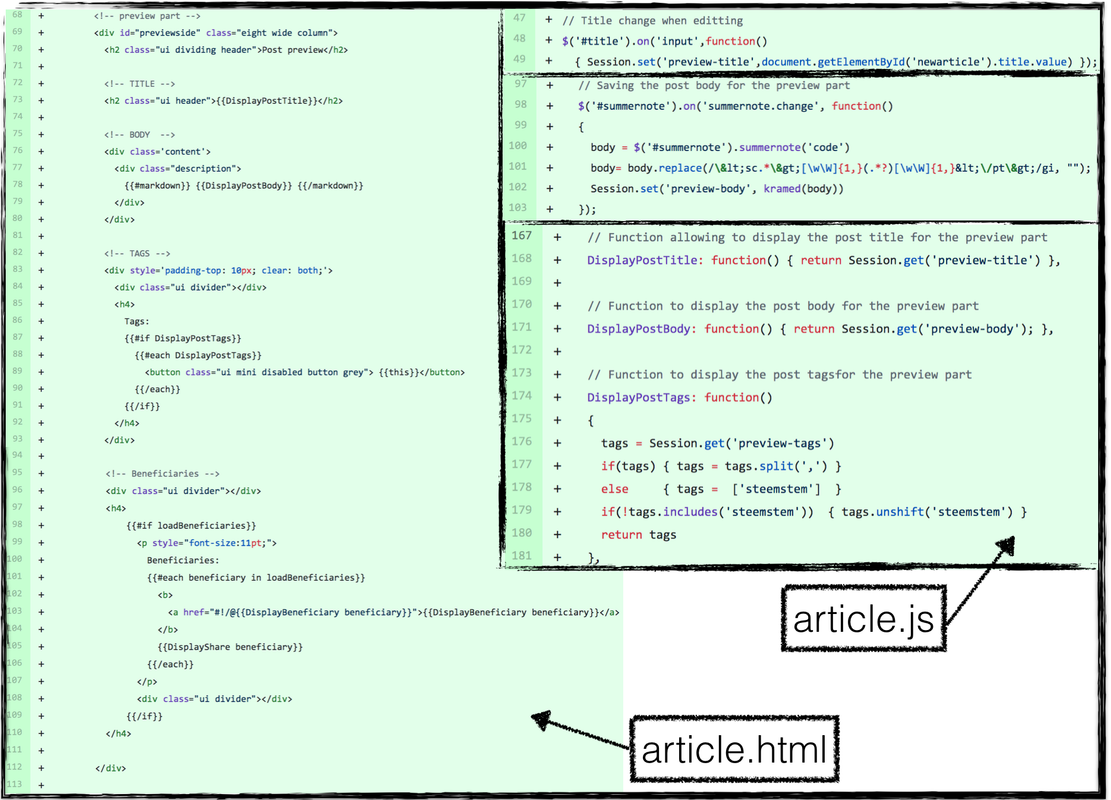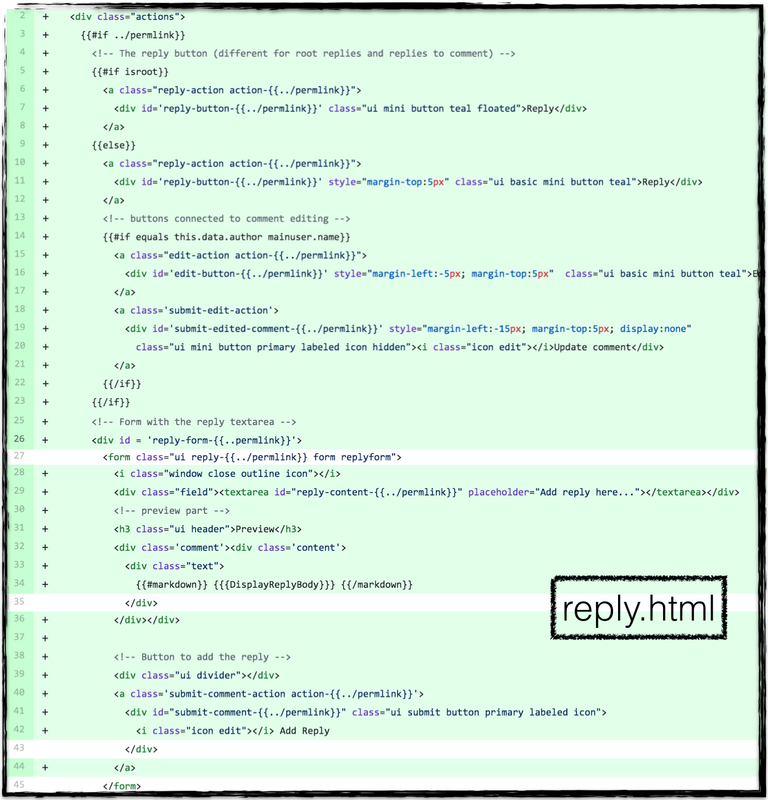It is now two months I haven’t given any update about the developments of the SteemSTEM app, steemstem.io. Whilst I was quite busy with physics, I also did some work, as available on our GitHub folder and summarized in this pull request.
By the way, this post is better formatted on steemstem.io. Feel free to give our app a try! A less technical summary will be released soon (i.e., when I will have time, so that we may need to wait).
 In this article, I then summarize the list of changes underlying this version 0.7 of the SteemSTEM app.
In this article, I then summarize the list of changes underlying this version 0.7 of the SteemSTEM app.
Most changes concern the experience of the user, and in particular comment posting and editing. To celebrate this long-awaited development, SteemSTEM has started to upvote (2%-4%) some of the comments posted through the app.
Moreover, I remind that setting @steemstem as a beneficiary to a post and use steemstem.io automatically yield a stronger upvote (up to 10% more) to any curated post.
--- On the left side of the image, we can see how the article content (title, body and tags) are extracted from helpers, following the standard way the meteor platform (on which steemstem.io is developed) should be used. Those helpers are connected to content updated via the editing form (that has been introduced in a former update) and the ```Session``` variable allowing to share information globally through the app client.
On the left side of the image, we can see how the article content (title, body and tags) are extracted from helpers, following the standard way the meteor platform (on which steemstem.io is developed) should be used. Those helpers are connected to content updated via the editing form (that has been introduced in a former update) and the ```Session``` variable allowing to share information globally through the app client.
On the right side of the image, we can see some of the javascript methods tracking the changes to the post title (top panel) and to the post body (middle panel). Moreover, some of the above mentioned helpers (post title, body and beneficiaries) are shown in the lower right panel of the figure.
In this way, every time an attribute (like ```preview-body```) of the global ```Session``` variable is updated by the user editing the post, the corresponding (like preview) part of the HTML page is automatically updated via the helper used on the HTML side.
--- First of all, as shown on the above image, we have more noticeable buttons everywhere: to edit posts, to reply to a post, to reply to a comment to a post, to edit a comment, etc.
First of all, as shown on the above image, we have more noticeable buttons everywhere: to edit posts, to reply to a post, to reply to a comment to a post, to edit a comment, etc.
The preview of the replies is handled following a strategy similar (but with some differences) to what has been implemented for post preview. First of all, we start with ```reply.html``` in the ```client/views/pages/article/components``` folder. In this file, we define how a ‘reply’ environment works.
 The key point is to assign (via different ```div``` environments) different identifiers to the reply buttons, the associated actions, the form in which a reply is typed/edited, etc. This is illustrated in the above image where we can see the association of the parent’s permlink with any button identifier. Similarly, the form in which a reply can be typed in has a permlink-dependent identifier through the ```class``` attribute of the corresponding HTML form,
The key point is to assign (via different ```div``` environments) different identifiers to the reply buttons, the associated actions, the form in which a reply is typed/edited, etc. This is illustrated in the above image where we can see the association of the parent’s permlink with any button identifier. Similarly, the form in which a reply can be typed in has a permlink-dependent identifier through the ```class``` attribute of the corresponding HTML form,
By the way, this post is better formatted on steemstem.io. Feel free to give our app a try! A less technical summary will be released soon (i.e., when I will have time, so that we may need to wait).

Most changes concern the experience of the user, and in particular comment posting and editing. To celebrate this long-awaited development, SteemSTEM has started to upvote (2%-4%) some of the comments posted through the app.
Moreover, I remind that setting @steemstem as a beneficiary to a post and use steemstem.io automatically yield a stronger upvote (up to 10% more) to any curated post.
---
1. Post editing
Article preview is now available when an already-posted article is edited by its author. This development necessitated to modify the two files ```article.html``` and ```article.js``` in the ```client/views/pages/article/``` folder. Some of the changes are given in the picture below to illustrate the adopted strategy. On the left side of the image, we can see how the article content (title, body and tags) are extracted from helpers, following the standard way the meteor platform (on which steemstem.io is developed) should be used. Those helpers are connected to content updated via the editing form (that has been introduced in a former update) and the ```Session``` variable allowing to share information globally through the app client.
On the left side of the image, we can see how the article content (title, body and tags) are extracted from helpers, following the standard way the meteor platform (on which steemstem.io is developed) should be used. Those helpers are connected to content updated via the editing form (that has been introduced in a former update) and the ```Session``` variable allowing to share information globally through the app client. On the right side of the image, we can see some of the javascript methods tracking the changes to the post title (top panel) and to the post body (middle panel). Moreover, some of the above mentioned helpers (post title, body and beneficiaries) are shown in the lower right panel of the figure.
In this way, every time an attribute (like ```preview-body```) of the global ```Session``` variable is updated by the user editing the post, the corresponding (like preview) part of the HTML page is automatically updated via the helper used on the HTML side.
---
2. Comments posting, preview and editing
The way comments to posts are handled has been completely changed. First of all, as shown on the above image, we have more noticeable buttons everywhere: to edit posts, to reply to a post, to reply to a comment to a post, to edit a comment, etc.
First of all, as shown on the above image, we have more noticeable buttons everywhere: to edit posts, to reply to a post, to reply to a comment to a post, to edit a comment, etc.The preview of the replies is handled following a strategy similar (but with some differences) to what has been implemented for post preview. First of all, we start with ```reply.html``` in the ```client/views/pages/article/components``` folder. In this file, we define how a ‘reply’ environment works.
 The key point is to assign (via different ```div``` environments) different identifiers to the reply buttons, the associated actions, the form in which a reply is typed/edited, etc. This is illustrated in the above image where we can see the association of the parent’s permlink with any button identifier. Similarly, the form in which a reply can be typed in has a permlink-dependent identifier through the ```class``` attribute of the corresponding HTML form,
The key point is to assign (via different ```div``` environments) different identifiers to the reply buttons, the associated actions, the form in which a reply is typed/edited, etc. This is illustrated in the above image where we can see the association of the parent’s permlink with any button identifier. Similarly, the form in which a reply can be typed in has a permlink-dependent identifier through the ```class``` attribute of the corresponding HTML form,